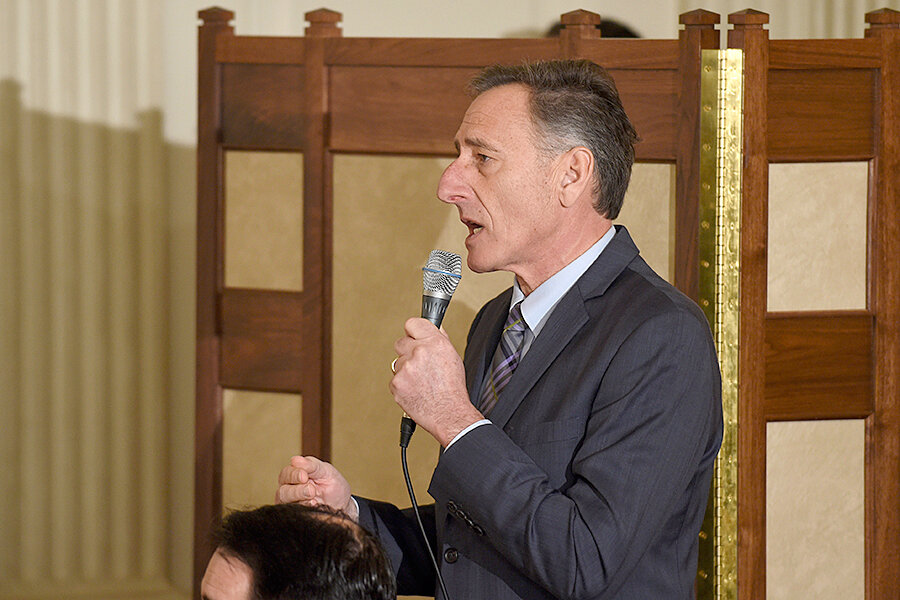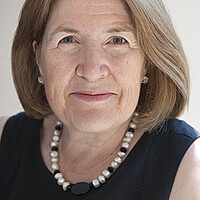How one state turned its 'heroin crisis' into a national lesson
Loading...
| Washington
America’s opioid addiction crisis, now claiming 78 lives a day, is sweeping aside party lines both at the state level and even in famously gridlocked Washington.
The nation’s governors, from deep-red Alabama to bluest-of-the-blue Vermont, are moving rapidly to a strategy of treating illegal drug users rather than jailing them.
It’s a shift that runs deep in public opinion, as well. Some two-thirds of Americans now typically say that they prefer providing treatment to long prison sentences.
“This is an area where I can get agreement from Bernie Sanders and Mitch McConnell,” President Obama said at a White House meeting with governors on Monday. “That doesn’t happen that often, but this is one. And it indicates the severity of the issue.”
But the governors are, in fact, well ahead of Washington on this issue – as they were on welfare reform in the 1990s and, more recently, sentencing reform.
Gov. Peter Shumlin (D) of Vermont, a leader in the pivot from prisons to treatment, says he got into the addiction fight after talking to people in his state.
“I found we were doing almost everything wrong,” he told a forum on opioid and heroin addiction at The Pew Charitable Trusts in Washington on Friday.
The best hope is to get more people into treatment, he said. And the best time to do that is “when the blue lights are flashing and the handcuffs are on.”
Vermont, like other states in the Northeast, is facing severe opioid challenges. In 2014, Governor Shumlin devoted his annual State of the State address entirely to Vermont’s “full-blown heroin crisis.” Annual overdose deaths from opioids had nearly doubled since 2004. The number of people seeking treatment for opioid addiction had spiked 770 percent since 2000.
What Vermont has done
And so Vermont has taken a hard look at its approach. Instead of jail, nonviolent offenders are given the option of going into treatment. They start in one of the state’s new central clinics (hubs) and move on to a family doctor, counselor, or therapist closer to home (spokes).
Vermont law also shields people seeking medical help for an overdose from prosecution for manufacturing or selling drugs, not just for minor crimes. It also was the first state to legalize the sale of naloxone over the counter in pharmacies – a drug aimed at reversing overdoses and saving lives.
Other states have moved toward treatment instead of incarceration, but Vermont has done it on a grander scale, experts say.
“You’ve seen some elected officials support legalizing marijuana, some want to reform sentencing, some talk about overdoses, but very few have tied all these together in a comprehensive narrative,” says Bill Piper, senior director of national affairs for the Drug Policy Alliance in Washington.
“Vermont’s governor is at the forefront, and what makes him unique is that he’s one of the few elected officials that has connected the dots on the various issues,” he adds.
As a pioneer state, Vermont has also identified some of the limits of a treatment-centric strategy.
“As you build out treatment, and particularly in rural America, we can’t get enough docs who are able to meet the demand of our waiting lists,” Shumlin told the president at the White House meeting Monday.
But the most important issue, he told Mr. Obama, is to “come up with a more rational approach to prescribing prescription drugs.”
A bid to rein in prescriptions
Governors see legal prescriptions for drugs like OxyContin as the gateway to heroin. “Overprescribing of opioid painkillers has fueled the nation’s addiction crisis,” according to a report from the National Governors Association’s Health and Human Services Committee.
In a bid to rein in prescriptions, governors on that committee plan to develop a list of protocols to present to the full membership at the next NGA meeting in August.
“The United States represents 5 percent of the world’s population and consumes 80 percent of the world’s opioids,” said Gov. Charlie Baker (R) of Massachusetts, who chairs the NGA’s Health and Human Services Committee, on Saturday. That’s “fundamentally flawed.”
When prescriptions are too hard to get – or too expensive – addicts switch to heroin.
"Most of the heroin addicts we treat started by using prescription opiates," says Brian McAlister, author of “Full Recovery” and CEO of the Full Recovery Wellness Center in Fairfield, N.J.
"Some were prescribed by a doctor or dentist, others were stolen from family or friends' medicine cabinets, and others were purchased illegally just to party – but the party ends very quickly. These drugs are highly addictive, and when the supply runs out, the problems get worse."
At the national level
The prospect of politicians reining in pharmaceutical sales is a stretch in the halls of Congress. In 1993, the GOP-controlled Congress explicitly barred government from negotiating lower drug prices with drug companies. Last year, Big Pharma spent more than $235 million to influence policy outcomes in Washington – the largest budget of any lobby group in Washington.
Governors could set protocols on prescribing practices for painkillers on their own, Shumlin told the president. “But it takes time,” and “it doesn’t apply to all 50 states.” Instead, he asked Obama to “consider a national approach which simply says, for minor procedures, we’re going to limit this to 10 pills and after that you’ve got to come back for more.”
“To be candid, the docs, the AMA [American Medical Association] are resistant to listening to politicians like us talking about how many pills to prescribe. But is there something you could do on a national level that would help us get out of this tragic mess?” he added.
Obama answered, at length, but in the end deferred to the states. “A very specific approach to working with the docs, the hospitals, the providers so that they are not overprescribing” can be done at the national level, he said. “But it is most profitably done, I think, if we have bipartisan support from the governors so that by the time it gets to the national level, there is consensus and there’s not a lot of politics involved in it.”
In a recent blog, AMA president Steven Stack called the opioid epidemic a “defining moment” for the profession. “Our nation is needlessly losing thousands of people to a preventable epidemic, and we must take action for our patients.”






